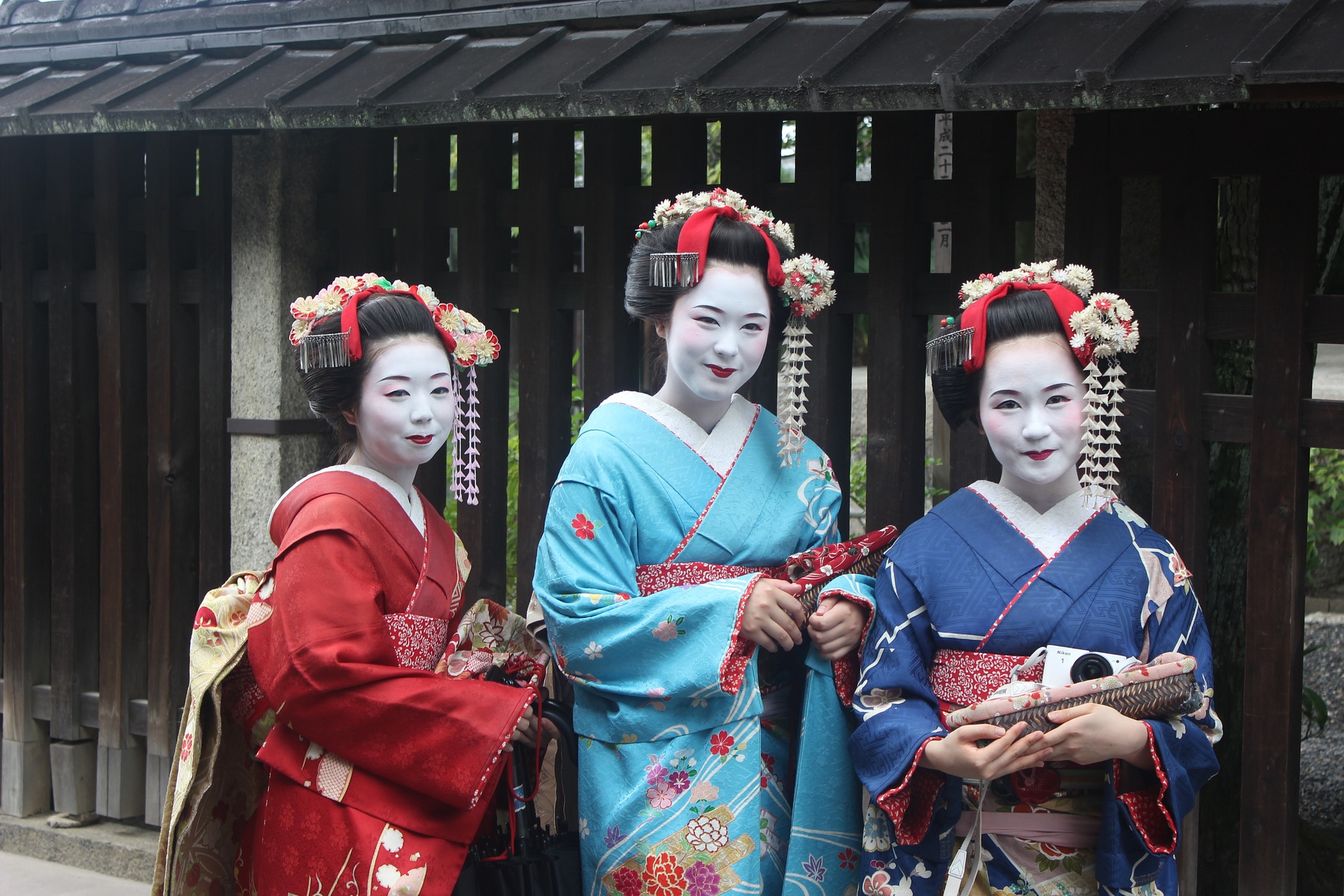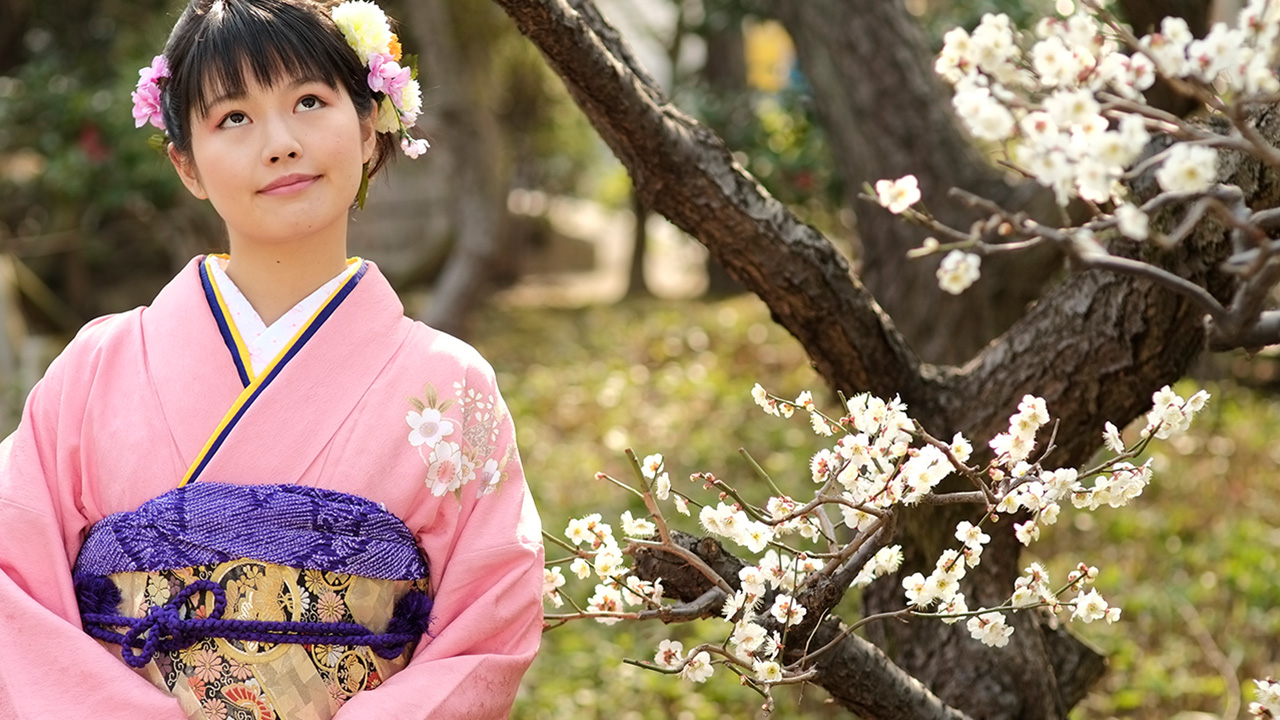Kimono Definition Theatre
The word kimono literally means clothing and up until the mid 19th century it was the form of dress worn by everyone in Japan. The dual art of noh and kyogen is known as nogaku and has been designated an Intangible Cultural Heritage by UNESCO.

Ibi Festival 1 A Photo From Gifu Chubu Trekearth Kabuki Dance Japanese Culture Japanese Traditional
Kimono PatternsA guide to their rank and seasons Supervised by Kenzo Fujii Sekai Bunka Publishing in Japanese Featuring over 300 kimono patterns including the ones introduced in this story the book helps readers learn about the history and meanings of kimono patterns through a rich variety of photos.

Kimono definition theatre. A celebration or holiday. Rather than being actors or representers in the Western sense Noh performers are simply storytellers who use their visual appearances and their movements to suggest the essence of. The Japanese kimono is one of the worlds instantly recognizable traditional garments.
But in more recent years the word has been used to refer specifically to traditional Japanese clothing. Kyōgen a traditional form of Japanese comic theatre that influenced the development of kabuki. A danna was typically a wealthy man sometimes married who had the means to support the very large expenses related to a geishas traditional training and other costs.
Its long history is one of the best examples of how clothing confers a sense of identity. There are also purple blue and orange ones. Theatres are fantastic ways of transmitting a message orally or through gestures since for most of history education was a privilege.
The first ancestor of the kimono was born in the Heian period 794-1192. Karaori with sleeve slipped. Noh a traditional form of Japanese theatre.
The bridge over a steep gorge near the summit of Mount Seiryo was reputed to lead to the Buddhist paradise. Starting from the Heian period 794 AD-1195 AD many forms of theatrical arts emerged in Japan as a result of their cultural exchange with the Chinese empires. July 26 2021.
GloPAD 1002160 Women deranged from excess emotional strain and women doing physical labor like rowing slip off the right sleeve of the karaori and allow it to hang at the back nugisage. From the Nara period 710-794 until then Japanese people typically wore either ensembles consisting of. Posted by John Spacey September 04 2015.
Bunraku a traditional Japanese puppet theatre from whose scripts many kabuki plays were adapted. Juban is a piece of clothing worn under the kimono to protect it from body sweat make up etc. This was a time of great influence by Tang dynasty China consequently the long flowing Chinese robe became the model for the early kimono prototype.
It was traditional in the past for established geisha to take a danna or patron. Kimono kitsuke with floral motifs and coats of arms belonging to noble families. Kimonos as we know them today came into being during the Heian period 794-1192.
Starting with Noh mask theater from the founders Kanami Kiyotsugu and Zeami Motokiyo. The history of the kimonos development can be traced to the Nara period 710-784. To contemplate the flight of wild geese seen and lost among the clouds Zeami Motokiyo.
Dengaku musical and dance accompaniment to rice planting that celebrated rice planting. You just studied 8 terms. The motif on this exuberant outer-kimono uchikake relates to a popular kabuki play a traditional Japanese form of theatre derived from the Chinese legend of Shakkyō meaning Stone Bridge.
During the Heian period 794-1185. Juban may also be patterned whether it is. Those who choose to marry must retire from the profession.
Japanese theatre includes traditional forms that date back as far as the 14th century and modern theatre that is mostly inspired by western traditionsTokyo has an incredibly vibrant theatre scene with hundreds of theatres that present thousands of productions each year. This exposes the haku undergarment. Satin silk with appliqué and embroidery.
Geisha are expected to be single women. This sometimes occurs today as well but very. A loose dressing gown or jacket.
Originally kimono was the Japanese word for clothing. Nohits name derived from nō meaning talent or skillis unlike Western narrative drama. Kimono in English means wearing thing.
The Noh theater is one that developed throughout each year. Muromachi era It began in the 14th to 16th century in the court. To stand upon the shore and gaze after a boat that disappears behind distant islands.
Juban come in an array of colours - red white and pink as seen above. It was developed together with kyogen which are comical pieces performed during interludes of the main noh performance. Karaori worn as an undergarment kitsuke by a warrior-courtier Kiyotsune.
Noh theatre Noh also spelled No traditional Japanese theatrical form and one of the oldest extant theatrical forms in the world. Kimono with motifs relating to Kabuki theatre Japan 1860-1880. A long robe with wide sleeves traditionally worn with a broad sash as an outer garment by the Japanese.
Also historically the entertainment districts in Japan including kabuki theaters geisha houses and other forms of entertainment venues were located close to each other and governed by a similar set of rules which caused some early foreign visitors to think geishas are prostitutes. To wander on in a huge forest without thought of return. Outer kimono uchikake depicting a figure of a bridge across a river gorge with shishi mythical lions and two figures below among peonies.
Now up your study game with Learn mode. And is a vital piece in kitsuke. But the garment everyone associates with Japan was not always called by that name.
Click again to see term. Tap again to see term. The most popular colours however are shown above.
That began to change slowly with the import of suits dresses and other western fashions during the Meiji Era. Japanese aesthetic ideals are most heavily influenced by. Oshiguma an imprint of the face make-up of kabuki actors as artwork and souvenir.
In the beginning these theatres were exclusive. Japan closed its doors to China and her direct influences and as a result the first distinctive Japanese art forms. Study with Flashcards again.
Noh 能 Nō is a form of theater involving music dance and drama originating in the 14th century.

All About Kimono Designs Patterns Where And How To Buy Live Japan Travel Guide

In Japan Virali Diary Noh Theatre Japanese Noh Japan Culture

Bando Tamasburo Male Kabuki Legend By Kishin Shinoyama Japanese Outfits Kabuki Costume Japan Fashion

Pin On Steampunk Orientalist Edwardian Fashion

Well I Guess The Definition Of A Geisha Is To Be Perfect Geisha Girl Geisha Japanese Geisha

Zhang Ziyi As Moon In Hero Hero Movie Zhang Ziyi Hero

Girls Ultimate Guide To Wearing Kimono Pop Japan

Gender Roles In Kabuki Victorian Dress Women Kabuki

Supernatural Characters Have More Complex And Colorful Faces Artes Cenicas Artistas Personagens

The Kimono Gallery Japanese Traditional Clothing Kimono Japan Traditional Asian Dress

What Is A Kimono Some Interesting Facts About This Traditional Japanese Clothing Sew Guide Japanese Outfits Traditional Kimono Japanese Traditional

Know Your Kimono 9 Different Kimono Types Wattention Com

Posting Komentar untuk "Kimono Definition Theatre"